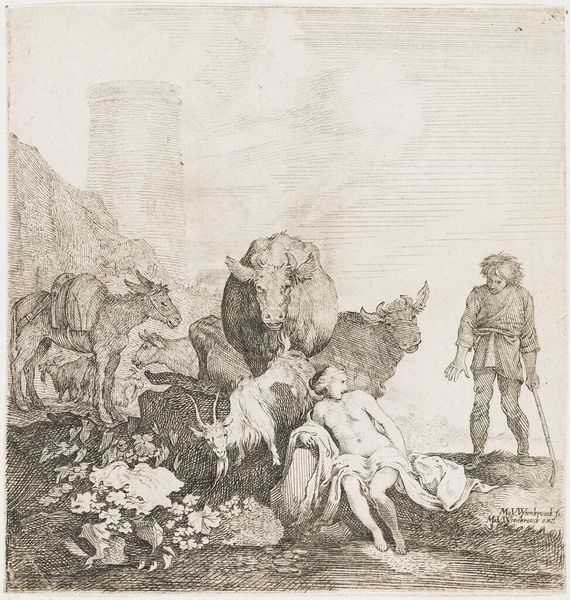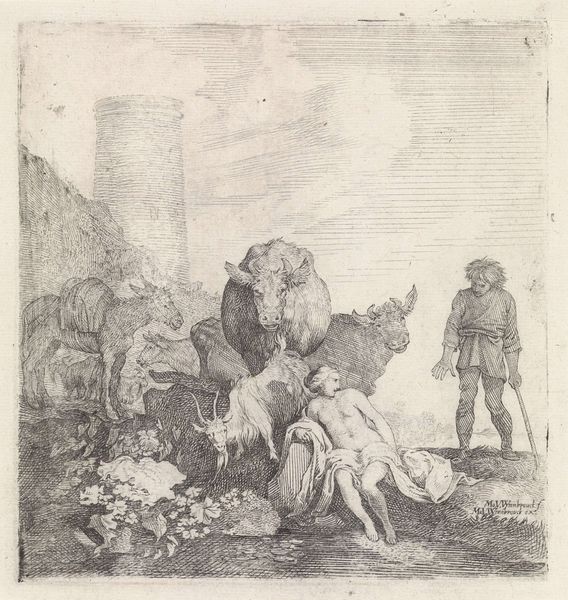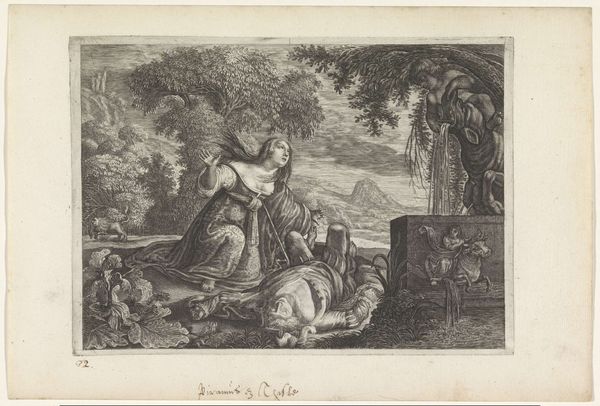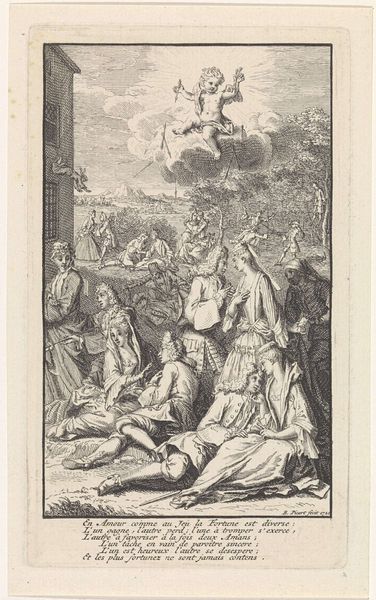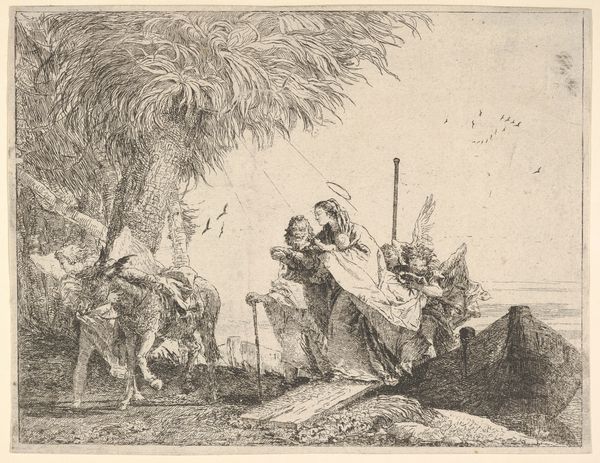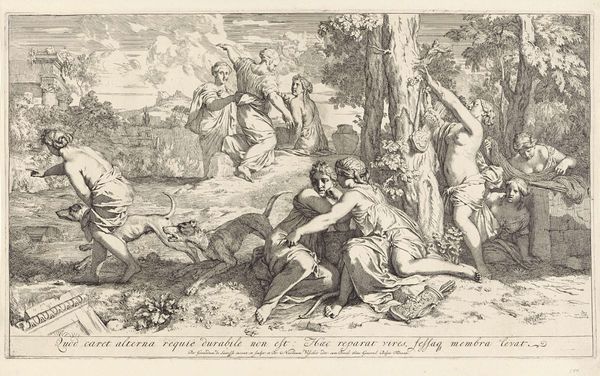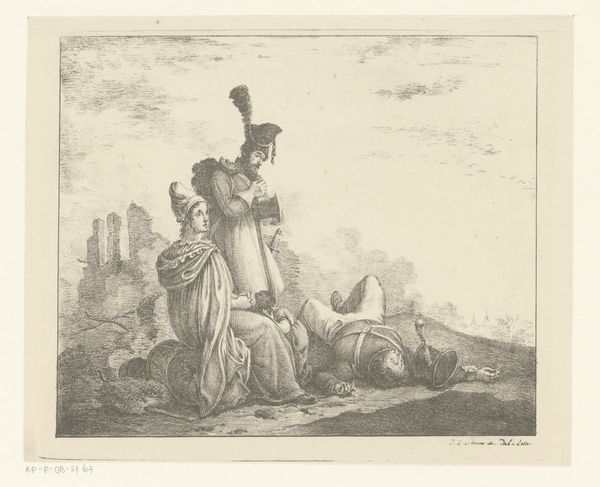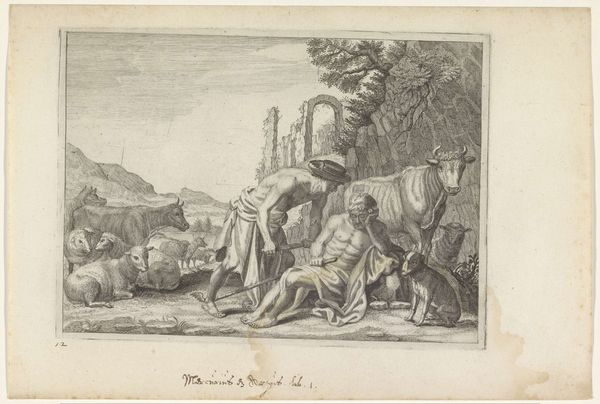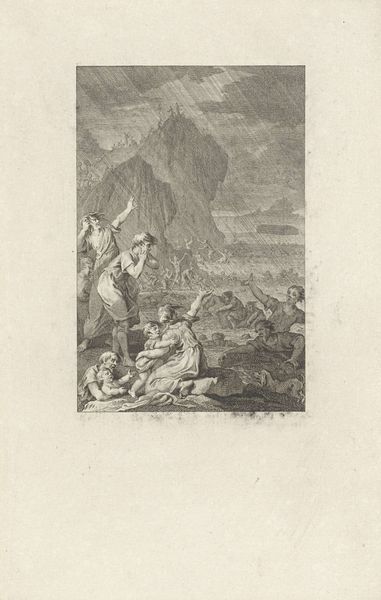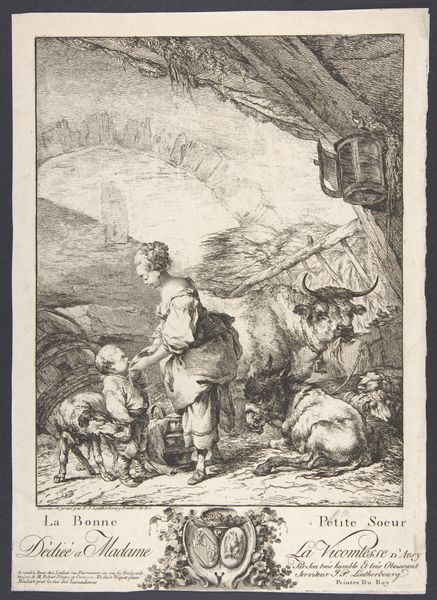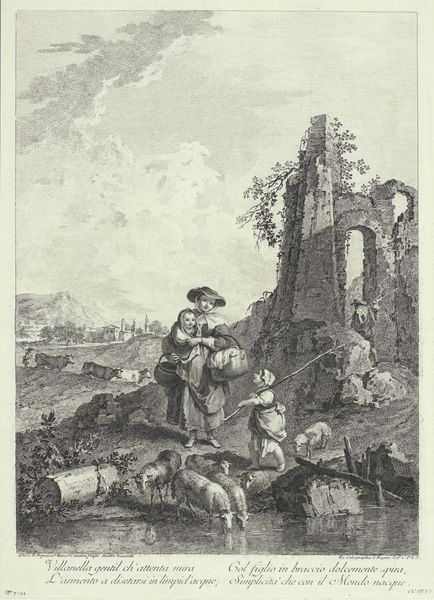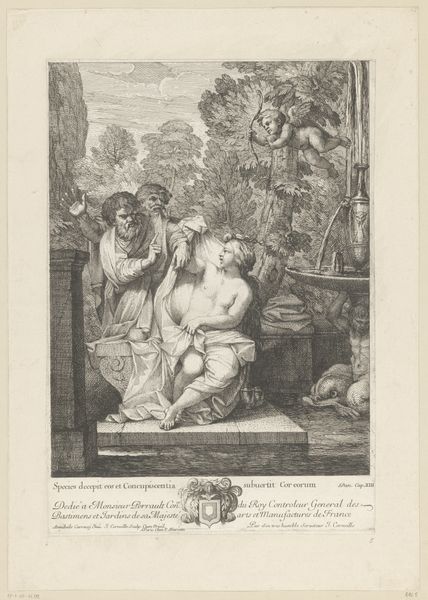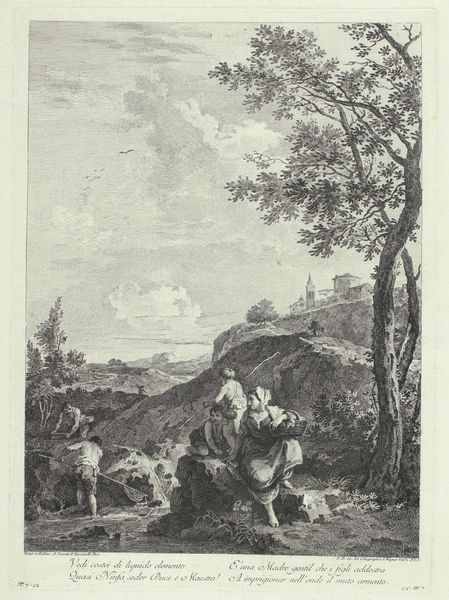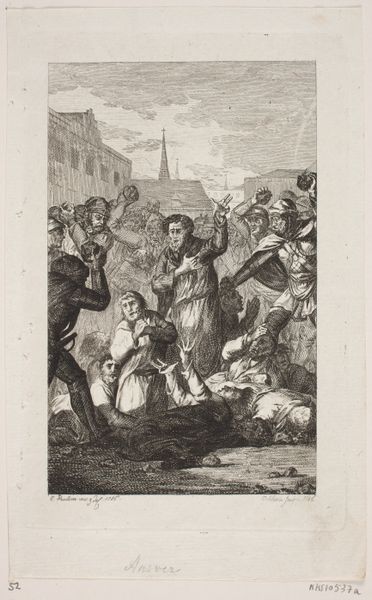
print, etching
#
baroque
# print
#
etching
#
landscape
#
figuration
#
nude
Dimensions: height 148 mm, width 139 mm
Copyright: Rijks Museum: Open Domain
Curator: Let's turn our attention to this etching, “Vrouw verrast bij het baden”, attributed to Moyses van Wtenbrouck and created sometime between 1600 and 1760. The piece depicts a woman interrupted while bathing. Editor: The atmosphere practically crackles, doesn’t it? There’s a tension there. It feels less idyllic landscape, and more...a tableau vivant from a dream where boundaries are porous, where the animal world stares. The woman’s exposed body, surrounded by these...judging animals...it evokes such complicated feelings. Curator: It's intriguing, isn't it? While the scene is framed as a spontaneous, almost voyeuristic encounter, images like these had a didactic function at the time. The female nude in baroque art often served as a vehicle for moral narratives or allegories. The surprise might serve to question and condemn immoral behavior. Editor: So the woman's not just bathing; she's been caught doing something taboo. That peasant or shepherd… Is he shocked, or perhaps simply opportunistic? His gesture—arm outstretched, gazing, but not interfering directly—creates another layer. And the tower on the horizon, an eye, suggesting someone is watching over all, perhaps judging. Curator: Precisely. Wtenbrouck, whether directly or indirectly, likely drew on classical myth or biblical tales—the kind of source material that gave artists license to represent the nude within acceptable cultural and moral frameworks. This image certainly speaks to notions of shame, exposure, and societal expectations surrounding the female body. And notice, she's watched over by animals that were probably considered her property: oxen and goats, not predatory wild animals. Editor: Still, I can’t help but feel the tension, a discomfort beneath the surface. The landscape is so carefully constructed, almost stage-like. And the composition with so much empty space on the sky enhances it. There is so much empty space there. It makes you feel uneasy. And, the lack of clear context, is it really pastoral innocence, or something much darker lurking within? The scene whispers more than it declares. Curator: That ambiguity, I believe, makes it enduring. It provides insight into period anxieties. Consider also the format—the etching, a mass-reproducible medium—speaks to a culture wrestling with private acts in a rapidly changing public sphere. Editor: Looking at it now, that uncertainty and that mix of idyllic beauty and slightly unsettling details feel relevant, even contemporary. Curator: I agree completely; images continue to hold power by mirroring cultural issues back to us, forcing us to ask—what hasn't changed in the politics of looking and being seen?
Comments
No comments
Be the first to comment and join the conversation on the ultimate creative platform.
